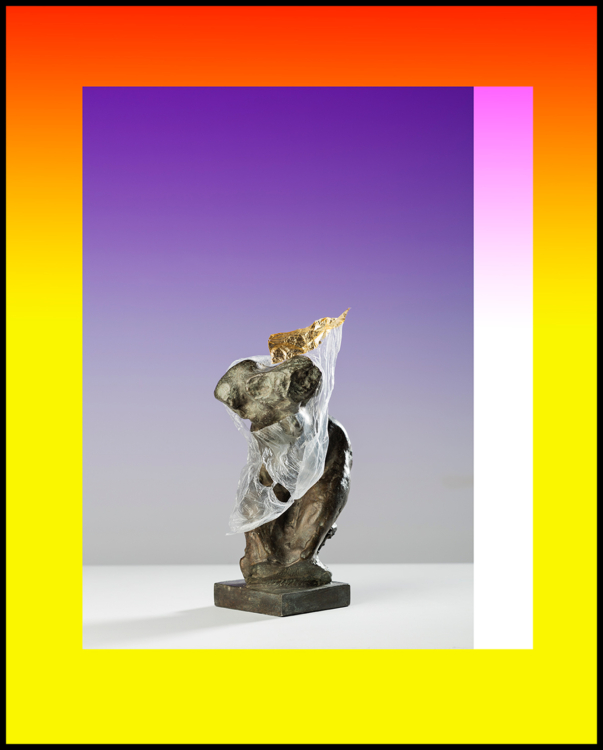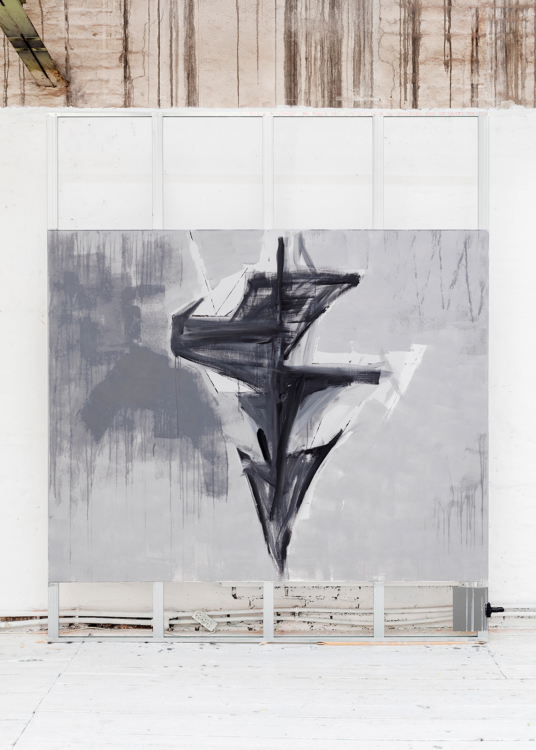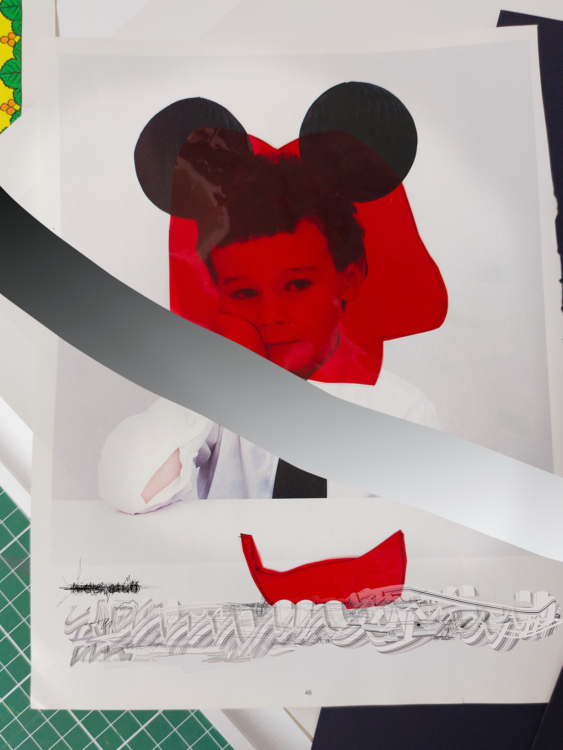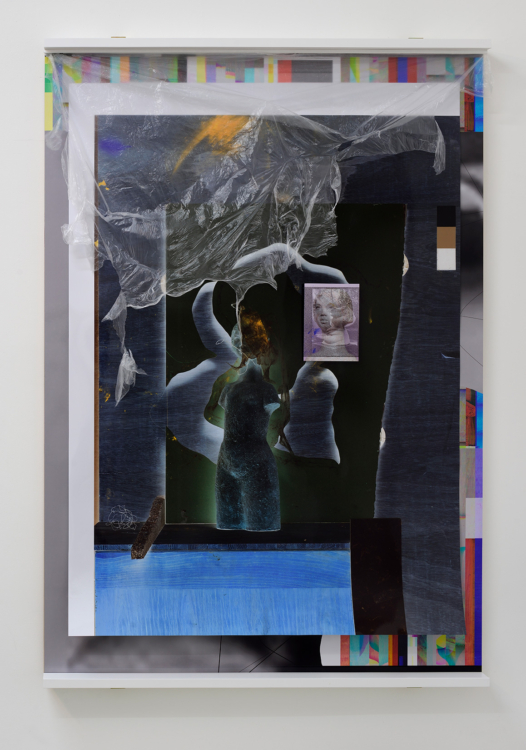There was much more snow in Prague this winter than anyone can remember in recent years. Jiří was waiting for me at the metro station, not far from the former housing estate bookshop, which was transformed into a casino in the 1990s. Demolition work at the former Moskva cinema, later the Ládví multiplex cinema, took place last year, and a new supermarket is now rising up there. I wanted to find out something about it and I discovered a statement by a Penny Market spokesman for the CTK press agency from May 2020: “In the case of Ládví, as with all other Penny supermarkets, the architectural design will be prepared so that the new building fits into the surrounding environment.” OK.
A little further on, we stop at a little lake with a sculpture of pelicans, which was restored by the Ládví Group. At the beginning of the millennium, local patriots Jan Haubelt, Adéla Svobodová, Tomáš Severa and Jiří Thýn were behind the activities of this group, which brought art back to life on the housing estate. The list of their artistic achievements from the “zero” years includes, for example, Pruning Shrubs, which hid a socialist realist relief on a facade, making a Chalk Stand in the playground, and placing their original Postcards of Ládví on a local newsstand.
Tuning Comes from Within
The housing estate, consisting of blocks of prefab houses with large park areas, gradually segues into a residential development. We pass smaller blocks of flats and terraced houses, the path leading us to Ďáblice Grove. Cross-country ski tracks, frost, wind, whiteness all around. We talk about finding ways to capture a vivid gesture and thus rid the photograph of the assumption that the resulting image is always a pre-thought-out construction.
As in other interviews, Jiří returns to the photographic diptych: Composition No. 17 and Composition No. 27 from 2007. Over the course of a fortnight, he systematically photographed objects on his desk, trying to find the ideal composition. He came to the conclusion that the composition depends mainly on the current mood of the observer: “It depends on how you are positioned, not so much on the things.” Tuning in comes from within, not from outside. “Almost exactly ten years ago, Sandra Baborovská and I did an exhibition for the GHMP, which was at the Old Town Hall then. It was called Archetypes, Space, Abstraction.” At that time, I wrote this for Artlist about Jiří: “Jiří Thýn builds the photographic image, he does not enrich reality simply by choosing a different camera angle, but rather purposefully creates new reality.” Then, as a promising artist and a budding art historian, we sat in Café Indigo and smoked a packet of Start cigarettes out of nervousness at our meeting. We are ten years older; we walk through the woods and are a little bit less shy now. The topics of the conversation are identical and yet different, as are our views. Behind Jiří’s examination of the genre of photography, one feels the existential line of thought related to the limitations, to the given potential of this medium in a much clearer way today. Behind the systematicity and constructedness, we can suddenly see much more clearly the effort to find a way to work with photography with immediacy.
I’ll Borrow the Shape
In search of suitable shapes, Jiří repeatedly reaches into the history of sculpture. Although, according to him, these are random encounters, the way in which they are repeated suggests their meaning. Photographs of Spatial Composition by Katarzyna Kobro (1898–1951) reproduced in some book; a reproduction of the statue of Grands Ventres by Alina Sapocznikow (1926–1973) pinned to a notice board in his darkroom. Thýn anchors the black-and-white reproductions again in a physical space, supplementing them with coloured light, as was the case with Spatial Composition, a “simple geometric shape in shades of grey” which he reconstructed ten years ago for the exhibition at the Old Town Hall: “I liked it as a spatial solution and, at the same time, it referred to a photographic context.
I decided to do the thing there again, just to shift the scale and complement it with coloured space.” Or with direct physical action – like at the Shape, Work, and Two Fat Bellies exhibition two years ago at the Hunt Kastner Gallery –; “I developed into autonomous shapes and thematised both the abstraction and the work as such, as well as the objectivity and the site-specific installation themselves” based on a reproduction of the statue of Alina Sapocznikow’s fat bellies. We climb up to the Ďáblice Observatory. Here, we turn the dictaphone off for a while and look at the landscape.
On the way back, we talk about the upcoming exhibition at the House of Photography of the GHMP. It will probably be called Silence, Torso, Presence. The archetype for the shapes used this time is A Bud by Hana Wichterlová (1903–1990). The (non)accidental meeting of the artist with the statue took place at a recent exhibition of photographs by Josef Sudek. What fascinates us about Wichterlová today, her concentration and the fact that she produced only few works – something like slow art before it was cool – was perceived as a defect by art historian František Šmejkal even in the 1970s when he wrote about her “work unfortunately not too rich in terms of realisations” through which “she introduced the most topical problems of contemporary world sculpture into Czech art”. How will Jiří Thýn give her work space in his upcoming exhibition? “I’ll borrow the shape I get by taking photographs of her objects. Using a certain camera angle, the contours originate which I will adopt and use in my work, exposing them again.”
Beyond Thought
At that moment when we talk about the exhibition, everything is still in the process of creation. Jiří has a negotiated permit to photograph the works, he’s making sketches and thinks about three layers of the exhibition, which he calls his “modus operandi” and which he says he first used ten years ago in the exhibition Archetypes, Space, Abstraction. According to his current idea, the exhibition will consist of a massive ornamental surface – an installation of mortared plasterboard walls, photographs recording the various stages of painting on plasterboard and photograms… We return to finding a form that makes it possible to get emotions into photography. To a large extent, it is openness to chance and working with the unconscious: “I am now in a situation where the various currents are coming together, I am looking for a form that makes it possible to work with an image, whether digital or analogue, with some immediacy. I am not sure how it will work; it is largely open to some principle of chance, which will get you into something other than what you can imagine. That’s why a method associated with some kind of work with the unconscious is so important.”
Jiří ritually descends into the darkroom in the basement of his family house and plays the music of the French composer Éliane Radigue. The first synthesisers. “A strange noise, the presence of which you only realise when it is over and there is silence.” We resist diving into pathos with laughter.




